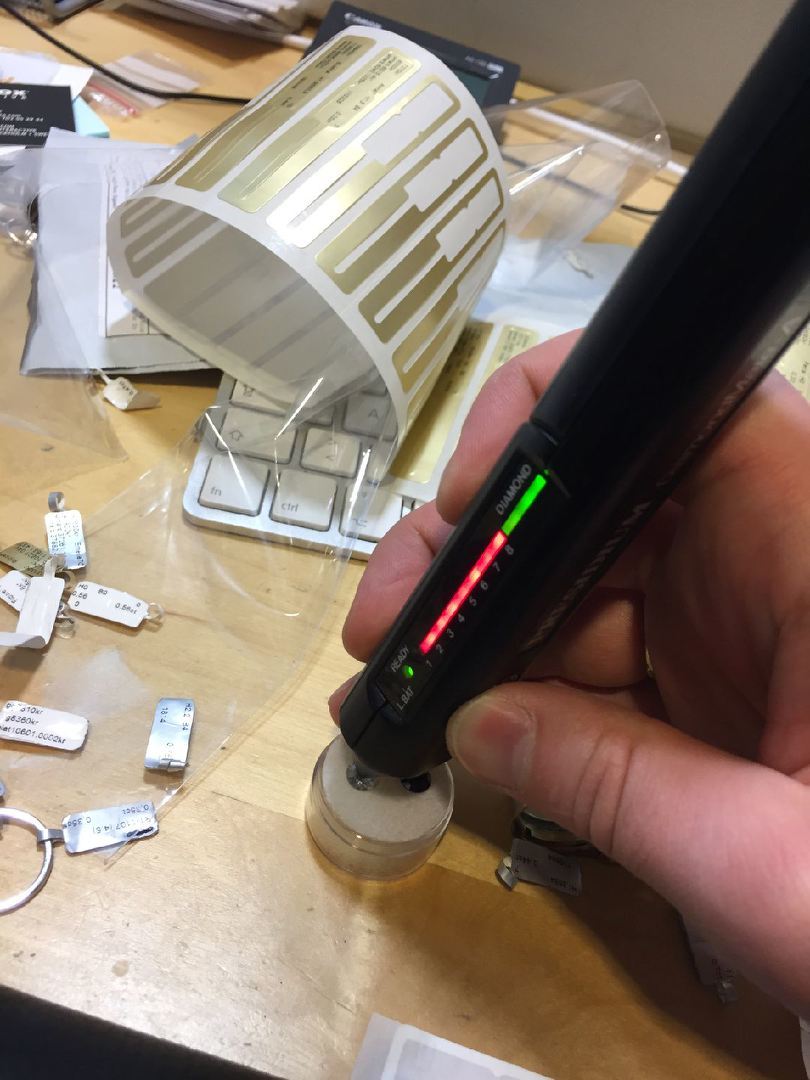Hello everyone.
A jeweler friend of mine bought this Diamond Moissanite duotester on a gemshow some time ago. It was expensive and they promised him that he wont need anything else anymore and blah blah blah. Ok… i showed up with my “chaotic low-life not Charles & Colvard made in India” Moissanites, and guess what? They passed for diamonds. My friend was heartbroken. He does not trust anything from now on. I told him that he cant trust electronical gadgets. The only thing that he can trust is optical and knowledge and experience.
Does anyone else have similar experiences?
Regards
Pierre
1 Like
Haven’t had experience with a moissanite tester. Agree with you that knowledge and observation are always your best tools. For someone with a little knowledge and experience, separating moissanite from diamond is trivial. Doubling of facets is observed along the C axis, the dispersion is over twice that of diamond, which is suspicious in most cuts. If you can use even a little “visual optics” a glance through the stone held close to the eye will show doubled sets of rainbows rather than the single sets of diamond, which is all you need to see. If your friend must use an instrument, a digital “refractometer” (reflectivity meter) will show the RI, which is much higher than diamond and it will also aid in identifying other stones. He’ll just have to beware of spurious readings caused by poor polish…
HTH somebody,
royjohn
1 Like
I agree with royjohn. However, Several years ago I purchased a moisanite/diamond tester on Ebay. It has proven to be a very valuable tool due to its settings. Moissanite tests out o be between 9.25 and 9.50 on the Mohs scale. Diamond is a 10. Most gem stone testers test the full range of the Mohs scale so unless you have experiance and background and know what to look for you, may be misled with a full range tester. Look for a tester that only reads10.
So if its not a 10, its not a diamond. However it will not be of much help identifying other stones. For that you will need a full rande tester. This also helps if you have a digital refractometer.
Just a note: No matter what tester you use, never take it for granted that it is 100% accurate. I have 9 hardness testers, 3 refractometers, and when I have used them all on the same stone, the refractometers are the only ones that have always read the same. Of the 10 hardness testers I always have 2 or 3 of them with differant readings.
Know your gems, And when it comes to diamond and moissaite, know their characteristics, and trust only your own eyes.
gerrysgems
1 Like
I’ve heard similar stories unfortunately. Sounds like the testers may not yet be reliable enough to be worth the investment.
1 Like
Hi Everyone,
I work at a jewelry chain store as a jewelry consultant and we have diamond-moissanite testers and often it reads moissanite instead of diamond! Especially if the gem is not perfectly clean and free of soap, oils etc… I prefer to rely on a loupe, looking for typical diamond inclusions, lack of worn facet edges and double refraction as is seen in moissanite. These testers are certainly frustrating and I don’t trust them at all! Interesting discussion.
